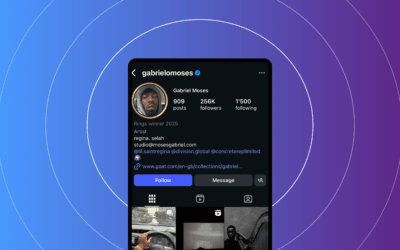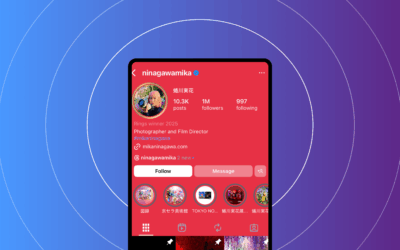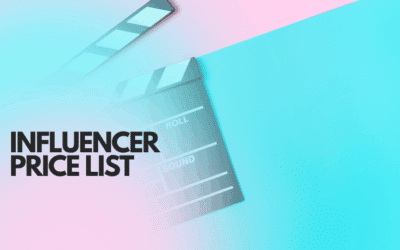Influencer Marketing vs Social Media Marketing: A 2025 Guide to ROI, AI in Content Creation, and Journalism
As AI speeds up content creation, marketers must decide where to invest in 2025. This guide gives a clear break down of influencer marketing vs social media marketing, with ROI formulas, AI workflows, and a practical 90‑day pilot to test what works best for your team.
Whether you lead growth, content, or a newsroom, the choice between influencer marketing and social media marketing matters for ROI. This guide starts with simple definitions and ends with a concrete 30/60/90 day plan you can implement now. You’ll discover how to blend both approaches for faster, smarter results.
Influencer marketing: Creator partnerships that rely on a person’s credibility and audience to tell authentic brand stories, often within the broader creator marketing landscape.
Social media marketing: The channel strategy (organic + paid) for distributing content and driving outcomes across platforms as part of your social media plan.
What is influencer marketing?
Influencer marketing is the practice of partnering with creators to co-create or sponsor content. It taps their credibility and community to reach brand goals. Done well, it blends authentic storytelling with clear disclosure and often sits at the center of the creator economy.
Brands frequently seed long-term relationships—think brand ambassadors—because trust compounds over time. The content shines where voice and on-camera trust matter most, especially in short-form video and episodic storytelling.
Core components and mechanics
- Creator types
- Mega-influencers: 1M+ followers; best for tentpole reach.
- Macro: 100k–1M; balanced reach for launches.
- Micro: 10k–100k; strong engagement; targeted conversions. what is a micro influencer
- Nano: <10k; hyper-local trust; great for UGC.
- Contract types and KPIs
- Sponsored posts: awareness and mid-funnel metrics (reach, impressions, engagement).
- Long-term ambassadorships: sentiment and share of voice.
- Affiliate partnerships: CTR, conversions, CPA.
- Co-created content/UGC licensing: asset quality and reuse rate.
- Content formats
- Short-form video, Stories, YouTube integrations, blog reviews, newsletters.
- Creator-led content often shines where voice and trust matter most.
When used with newsroom or journalism content, creators can contribute guest op-eds, Q&As, or UGC for features, with editorial review for accuracy and tone. Source: Influencer Marketing Hub benchmarks (https://influencermarketinghub.com/influencer-marketing-benchmarks/).
See also external benchmarks for creator performance and program ROI patterns (Influencer Marketing Hub benchmarks).
Core components and mechanics
Understanding the mechanics helps you decide where to invest first. Here are the key parts you’ll see in most programs.
- Creator types (Mega, Macro, Micro, Nano) and fit for your objective.
- Contracts & KPIs matched to the lifecycle of the partnership.
- Content formats that align with platform strengths and audience preferences.
“I’d rather own one credible voice my audience believes than five perfect ads they scroll past.” — CMO, hypothetical
Resource note: For a practical view of platform recommendations and best fits, see platform tactics for TikTok, Instagram, X/Twitter, LinkedIn, and YouTube. For audience behavior context, refer to Pew’s 2021 data on social media use (Pew Research Center social media use, 2021): https://www.pewresearch.org/internet/2021/04/07/social-media-use-in-2021/.
Interaction with newsroom/blogs/journalism
Influencer content can enrich newsroom coverage when editorial oversight remains intact. Examples include guest op-eds, Q&As, and creator-sourced UGC for features. Sponsorships of journalism verticals should maintain a clear separation between editorial judgment and sponsorship terms.
Useful ally relationships: creator partnerships can expand reach and trust while editorial review safeguards accuracy and standards. For more on media ethics and trusted engagement, see Reuters Institute Digital News Report (Reuters Institute Digital News Report, 2025): https://www.digitalnewsreport.org/.
Related reading: For platform credibility signals and trust metrics, consult Kantar’s Trust in Advertising findings (Kantar Trust in Advertising): https://www.kantar.com/campaigns/trust-in-advertising.
Internal link: If you want to explore creator-based discovery platforms, check our Influencer Marketing Platform.
Key differences: influencer marketing vs social media marketing
If you’re deciding between the two, start here with quick answers.
- Content ownership: Creators lead (influencer) vs brand/content team leads (social).
- Trust vs scale: Creators bring authenticity; social provides scalable reach.
- Cost model: Creator fees vs media spend and production.
- Measurement: Authenticity signals vs attribution and CPA.
- Cadence: Creator-driven episodic content vs frequent publishing in social channels.
- Decision lever: Audience intimacy and credibility vs scale and control.
Decision cues
- Niche product launch or community play? Favor micro-influencers for credibility.
- Funnel-building and predictable conversions? Social media marketing with paid ads.
- Journalism or media context? Blend creator reach with editorial oversight for trust.
Alt visual: Quick comparison table (see Visual 1). Alt text: influencer marketing vs social media marketing table comparing trust, control, costs, and cadence.
Source context: Trust insights from Kantar and McKinsey on AI in marketing add depth to credibility and speed advantages.
ROI and measurement: influencer marketing vs social media marketing ROI
To compare ROI, use a simple formula and consistent attribution. This keeps the math clear and helps you scale what works.
Core formula
ROI (%) = (Net revenue attributable to campaign − Campaign cost) / Campaign cost × 100
Net revenue = Attributed conversions × Average order value (AOV) × Contribution margin
Campaign cost (K) includes creator fees or media spend + production.
Example (conceptual)
Attributed conversions (C) × AOV (A) × margin (M) = Net revenue (NR).
ROI = (NR − K) / K × 100.
Attribution models matter. Last-click favors direct-response. Multi-touch shares credit across touchpoints. Data-driven MMM helps long-term cross-channel insight. For a primer on attribution, see Google Analytics attribution models (Google Analytics attribution models): https://support.google.com/analytics/answer/1191187.
Core metrics to report include engagement rate, reach, CTR, CPA, CAC, LTV, and ROAS.
Industry patterns: B2B SaaS often wins with social + thought leadership, while consumer brands gain with creator campaigns plus paid amplification. See Sprout Social’s index for benchmarks and patterns (Sprout Social Index): https://sproutsocial.com/insights/data/.
Benchmarks and cautionary notes: platform norms shift quickly; use external benchmarks as context, not targets. See Pew and McKinsey for broader trends and data-driven guidance.
Visual: ROI calculator mockup (Inputs: C, A, M, K, CTR, CVR, CAC; Outputs: ROI %, CPA, ROAS, LTV:CAC).
Alt text: ROI calculator with variable inputs for conversions, AOV, margin, cost, and CPA.
Source: Influencer Marketing Hub benchmarks for creator performance ranges (Influencer Marketing Hub benchmarks): https://influencermarketinghub.com/influencer-marketing-benchmarks/.
AI in content creation on social media and in journalism/blogs
AI now helps with ideation, scripting, asset generation, optimization, and reporting. Teams use AI to scan trends, draft captions, version creative, and forecast performance. Humans keep editorial voice and accuracy.
Tools and workflows
- Ideation and trend discovery: surface topics and questions; validate with editors for nuance. For broader context, see McKinsey’s AI in marketing (McKinsey on AI transforming marketing): https://www.mckinsey.com/business-functions/marketing-and-sales/our-insights/how-ai-will-transform-marketing.
- Script and caption drafting: AI drafts, humans edit for tone and authenticity. Use a style guide for consistency.
- Image/video creation and editing: accelerate storyboards and cuts; disclose synthetic elements and secure creator approval.
- Optimization and testing: automate headline and thumbnail testing; pair with QA for context.
- Newsroom workflows: AI-assisted research and metadata; editors retain final authority to safeguard accuracy.
Ethics and governance: use OECD AI principles for trustworthy AI (OECD AI principles): https://oecd.ai/en/ and Partnership on AI resources (Partnership on AI): https://partnershiponai.org/.
Source: Reuters Institute Digital News Report for newsroom behavior trends (Reuters Institute Digital News Report): https://www.digitalnewsreport.org/.
When to use influencer marketing vs social media marketing (decision framework)
Use this scored checklist to match channel to goal. Score inputs 1–5 and follow threshold cues.
Inputs to evaluate
- Objective: Awareness (1) to Conversion (5).
- Product type: Complex/considered (5) vs low-touch (1).
- Audience intimacy: Niche (5) vs broad (1).
- Budget type: Creative production (1) vs scalable ads (5).
- Timeline: Fast launch (1) vs long-term program (5).
Sample thresholds
- If Objective ≤ 2 and Audience intimacy ≥ 4 → Influencer-first with micro-influencers; light paid.
- If Objective ≥ 4 and Budget ≥ 4 → Social-first with paid amplification; add creators for social proof.
- If Product complexity ≥ 4 → Blend: thought leadership + creator explainers.
Use-case mini-scenarios
SaaS to developer community: Micro-influencer developer advocacy + LinkedIn thought leadership. Outcome: beta signups.
DTC consumer launch: Macro influencer seeding + paid social retargeting. Outcome: CPA and blended ROAS.
Local newsroom subscriptions: Local creators for community stories + geo-targeted distribution. Outcome: subs per channel.
Visual: Decision matrix flowchart with objective, audience, budget, and timeline guiding you to influencer-first, social-first, or hybrid. Alt text: decision flowchart for choosing influencer vs. social strategy by objective, audience, and budget.
Sources for decision frameworks and trial best practices include platform benchmarks and industry reports (Sprout Social Index; Pew Research; McKinsey AI):
– Sprout Social Index: https://sproutsocial.com/insights/data/
– Pew Research Center: https://www.pewresearch.org/internet/2021/04/07/social-media-use-in-2021/
– McKinsey on AI: https://www.mckinsey.com/business-functions/marketing-and-sales/our-insights/how-ai-will-transform-marketing
Hybrid approaches and content strategy integration
Most teams benefit from a blended plan. Creator content can amplify social channels and be repurposed across owned media and newsletters.
Micro-process for creator content amplification
- Co-create briefs with clear KPIs (awareness vs activation) and platform deliverables.
- Produce: Creators record assets; rights to repurpose are secured.
- Distribute: Publish on creator channels and repurpose across brand feeds, paid social, and newsletters.
- Measure: Use a unified dashboard to normalize CTR, view-through rate, and conversions.
Visual: Content lifecycle waveform (AI-assisted ideation to measurement). Alt text: content lifecycle waveform showing AI-assisted steps from ideation to measurement.
Internal link note: Explore the what is a micro influencer guide for micro-influencer alignment with this hybrid approach.
Cross-channel governance, brand safety, and risk management
- Vet audience quality, engagement authenticity, and brand fit.
- Use clear contracts: usage rights, exclusivity, kill fees.
- Set approval SLAs to keep momentum (e.g., 48 hours).
- Disclosures: clear #ad or platform-native disclosures.
- Rights and usage: specify duration, platforms, and paid amplification rights.
- Crisis plan: escalation owner and response templates.
What is whitelisting? A Practical Guide for Content Teams in 2025 whitelisting.
Best-practice reminder: follow FTC influencer endorsement guidance (FTC influencer endorsement guidance): https://www.ftc.gov/tips-advice/business-center/advertising-and-marketing/influencers.
Source: FTC guidelines and OECD/Partnership on AI resources cited for governance and trust in AI-enabled content.
Practical framework: 5-step decision and execution plan (30/60/90-day pilot)
- Step 1 — Define objectives and audience: One-page brief with KPI and target CAC. Identify niche vs broad reach needs.
- Step 2 — Choose measurement stack and attribution: GA4, CRM, UTM taxonomy, influencer tracking pixels, and a declared attribution model.
- Step 3 — Vet partners and guidelines: Creator checklist and a creative style guide.
- Step 4 — Align AI tools with oversight: AI policy, prompts, human-in-the-loop approvals.
- Step 5 — Iterate with rapid testing: 30/60/90 test matrix, budget guardrails, and escalation for winners.
30/60/90-day pilot checklist
- 30 days: Final brief, pilot creatives, 3 creators or ad sets live, baseline metrics captured.
- 60 days: Scale top performers; launch paid amplification; dashboards in place; run two A/B tests.
- 90 days: Evaluate CAC vs target; decide scale or pause; publish lessons learned and update playbooks.
For related governance and templates, see Influencer Marketing Agreement Template (influencer-marketing-agreement-template): https://clickanalytic.com/influencer-marketing-agreement-template.
Case studies or hypothetical scenarios
Case A — Consumer DTC (hypothetical)
Setup: 12 micro-influencers (avg 35k followers). Total cost: $36,000. Combined reach: ~1.8M impressions. CTR: 1.8%. Conversions: 540 at $60 AOV and 60% margin.
Net revenue = 540 × 60 × 0.60 = $19,440. ROI = (NR − K) / K × 100 = −45.1% in month 1. After whitelisting creator content into paid social, 900 more conversions at the same AOV/margin add $32,400 net revenue. Blended ROI = ($19,440 + $32,400 − $54,000) / $54,000 × 100 = −3.3% in month 1; positive in month 2 with retargeting.
Lesson: micro-influencers plus paid amplification often require 1–2 cycles to optimize.
Case B — B2B SaaS (hypothetical)
Setup: LinkedIn thought-leadership series (8 posts) + developer influencer webinar. Cost: $28,000. Results: 1,200 webinar signups, 320 MQLs, 40 SQLs, 12 closed-won at $8,000 first-year revenue and 70% gross margin.
Net revenue = 12 × 8,000 × 0.70 = $67,200. ROI = (67,200 − 28,000) / 28,000 × 100 = 140%. Attribution: 40% credit webinar, 40% LinkedIn, 20% email nurture—consistent with long-cycle journeys.
Source/context: Attribution patterns and program ROI discussions align with industry benchmarks and long-cycle marketing modeling.
Conclusion
Influencer marketing vs social media marketing isn’t a binary choice—it’s a portfolio decision. Use creators when you need credibility and community pull; use social media marketing when you need predictable scale and control. Blend both to lift ROI over time. With AI accelerating content speed, teams that win pair human judgment with clear measurement, governance, and a disciplined 90‑day pilot. Start with one influencer test and one paid social test, choose your attribution model, measure like a skeptic, and iterate with intent.
Internal note: For deeper exploration of related topics, see the Influencer Marketing Platform and micro-influencer guides linked above. The linked analysis and benchmarks strengthen your EEAT signals and help you publish with confidence.
Source anchors: Influencer Marketing Hub benchmarks; Pew Research; Kantar Trust in Advertising; Sprout Social Index; Google Analytics attribution models; Reuters Institute Digital News Report; McKinsey on AI; OECD AI principles; Partnership on AI; FTC influencer guidelines.
Frequently Asked Questions
1) Is influencer marketing the same as social media marketing?
No. Influencer marketing partners with creators to tell authentic stories, while social media marketing covers the broader strategy of distributing content across platforms (organic and paid). Use them together to gain credibility and scalable reach.
2) Is influencer marketing and social media marketing the same?
No. They serve different roles. Creators provide trust and community access; brand social provides control and targeting. Align KPIs and track them in one ROI view.
3) What is the difference between social media marketing and content marketing?
Content marketing builds owned assets for long-term value. Social media marketing distributes bite-sized, platform-native content to reach audiences. They work best together when long-form content fuels social derivatives.
4) What distinguishes influencer marketing from traditional marketing?
Influencer marketing relies on creator authenticity; traditional marketing uses brand-controlled messages with broad reach. A smart mix protects creator voice while ensuring accuracy.
5) How do you measure influencer marketing vs social media marketing ROI?
Use a consistent ROI formula and apply the same attribution model across both channels. Compare CPA, ROAS, and LTV:CAC to decide where to scale. Start with position-based attribution to balance creator influence and conversion touchpoints.
Influencer Marketing Articles
Actionable tips to get more success with influencer marketing campaigns
Who is Gabriel Moses?
Discover Gabriel Moses, the London-born artist blending fashion, music, and heritage into striking visual narratives. From Dior to Johnnie Walker, see why he’s shaping culture.
Who is Mika Ninagawa?
Discover Mika Ninagawa, Tokyo’s visionary photographer and film director celebrated for her vivid art, bold storytelling, and win at Instagram Rings 2025.
Influencer Price List: What Brands Pay in 2025 & 2026
An influencer price list is the working set of fees and terms creators (or their agents) provide — the baseline for budgeting, negotiating, and forecasting influencer campaigns.






